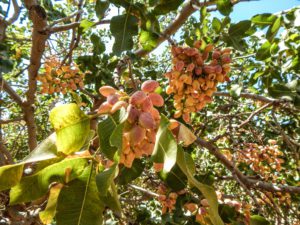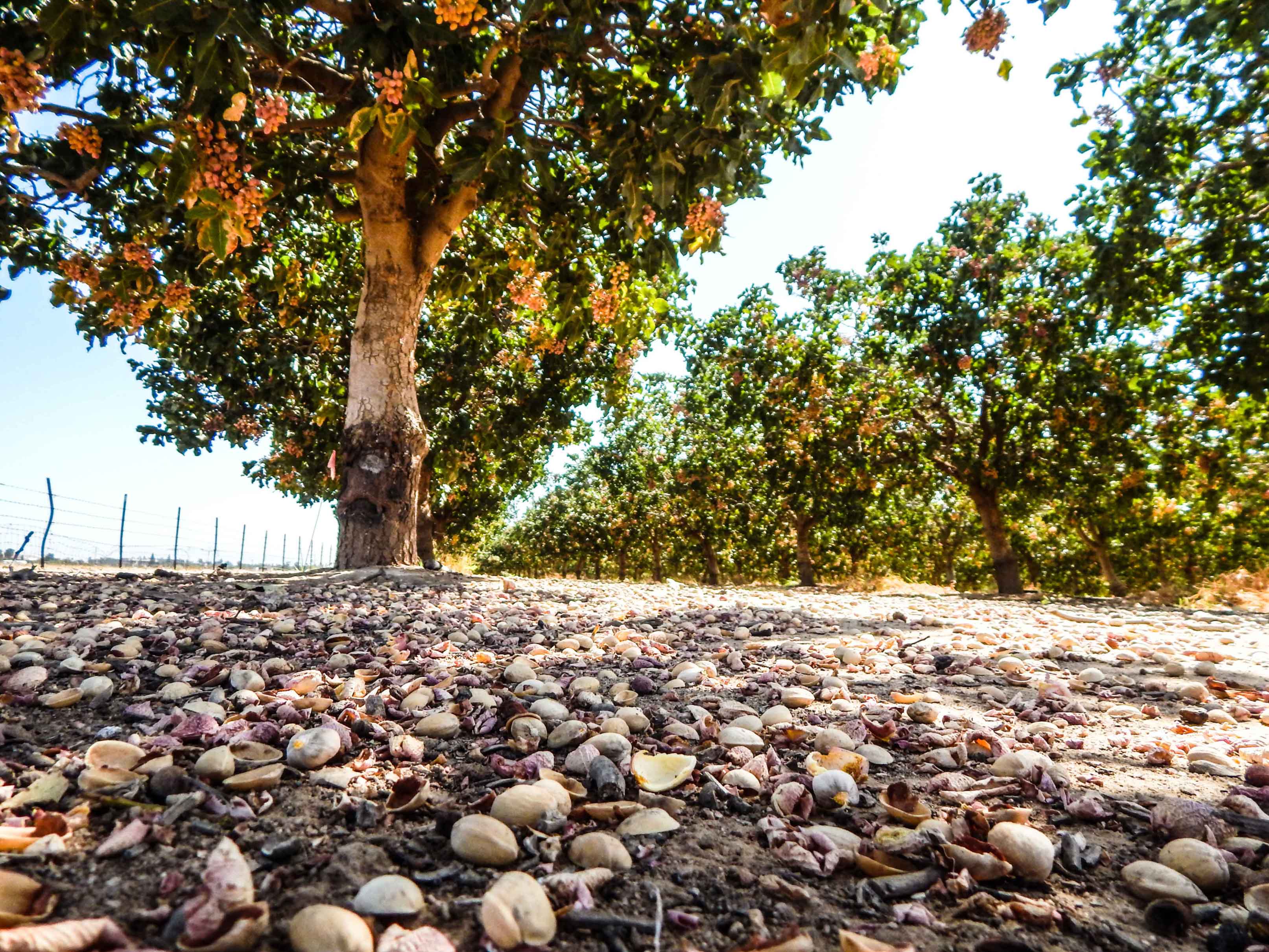Zinc is among the most likely deficient micronutrients for pistachios in the California growing areas, but there are ways for growers to monitor, prevent, and treat low zinc levels in the orchard. As summer progresses, growers should be considering leaf sampling to check for zinc deficiency in the orchard.
Author’s note: Information herein was collected from scholarly papers and presentations by University of California (UC) advisors Bob Beede, Brent Holtz, and Craig Kallsen.
Importance of Zinc
Zinc is necessary for formulation of Auxin, which plays a role in cell elongation and the forming of chloroplast. It is needed for the development of pollen, along with flower bud differentiation and fruit set.
Factors and Signs of Zinc Deficiency
There are several factors relating to zinc deficiency in pistachios and other nut crops. First, cut areas are more likely to be deficient. In addition, zinc has restricted solubility and movement in soils, which is made worse in alkaline soils and limitation in water flow. Root health is important for zinc uptake, so soils that limit root growth can also be problematic. Methyl Bromide fumigation causes a temporary loss of mycorrhizal fungi and ultimately less zinc. Lime reduces zinc availability as well, as do high magnesium or phosphorous levels.
With the EPA phaseout of Methyl Bromide more than ten years ago, there is less issue with the temporary loss of mycorrhizal fungi. Arbuscular mycorrhizal fungi are microscopic fungi naturally occurring in soil that form a symbiosis with plant roots. Studies show that this process helps plants absorb zinc through the roots.

Alkaline soils are more susceptible to zinc deficiency. Alkaline soils have pH values of 7.0 or greater and can lead to deficiencies in other nutrients as well. The solubility of several nutrients lowers as the pH level increases, including iron, phosphorus, copper, boron, and manganese. When these nutrients are not soluble, they remain in solid forms that the plants cannot absorb properly.
Look for symptoms of zinc deficiency in spring. The seasonal onset of symptoms of zinc deficiency is mid to late season, especially in young bearing trees. Younger leaves show zinc deficiency while older growth does not, due to the limited mobility of zinc in the plant. Over the course of the season, growers can look for delayed bud opening, terminal leaves that are small and yellow, wavy leaf margins, terminal dieback, reduced nuts and more blanks.
Testing for Zinc Levels
Growers can use soil sampling and leaf sampling to get an accurate picture of the zinc needs and uptake in their crop.
A single orchard can have several different soil types within it, due to conditions such as sand deposits, cuts or fills, or a number of other factors. In addition, soils often change with depth. Unlike leaf sampling, soil sampling typically does not need to be performed every year.
Other UC guidelines for soil sampling are:
- Take three to ten sub samples for each area, then combine them by depth into single samples
- Repeat the samples throughout the orchard
- Though pistachios are deep rooted, the suggested protocol is to sample at one foot increments down to three feet
Leaf sampling is a widely prescribed testing procedure for zinc and other nutrients in nut crops. It shows how successfully the tree is pulling nutrients from the soil and transporting those nutrients throughout the plant. Leaf sampling should be performed every year. Zinc levels for mature trees in late July and August are suggested by UC advisors to be 10 to 15 PPM (parts per million).
The UC guidelines for effective leaf sampling are:
- collect the sample from late July through mid-August
- sample non-fruiting branches, 6 ft. (1.8 m) from the ground
- choose fully expanded sub-terminal leaflets
- collect 4-10 leaflets per tree
- sample 10-20 trees/orchard block
- do not include leaflets that have received in-season nutrients sprays
- deliver the sample to the lab within 24 hours
- Optimal leaf tissue concentration: 10-15 ppm
- Critical value 7 ppm
Treating for Zinc Deficiency
Once a grower has identified zinc deficiency in the orchard, there are several possible courses to take and considerations to keep in mind. Treatments can include applying fertilizers, different irrigation management techniques, and changing the pH of the soil.
Zinc cannot be ‘stored’ by the plant, therefore over-applying zinc for later use by the plant is not effective and ultimately can be a waste of money. Foliar fertilizers benefit only the tissues sprayed and do not help plant growth that is developed after application. Fertilizers have limited long term effectiveness, therefore repeat applications may be needed.

Acidifying soils with sulfuric or phosphoric acids will correct some nutrient deficiency in alkaline soils. It is also possible and in some cases beneficial, to treat soil with sulfur dust where there is lime.
Other recommendations from UC farm advisors include:
- Zinc sulfate in late postharvest or bud-swell.
- Single post-bloom foliar spray of zinc sulfate and copper applied when canopy is 50-90 percent fully.
- Fertigating with non-chelated zinc and copper in alkaline soils is NOT effective.
- Fall application in late October (50 percent defoliation) requires high rates of Zinc Sulfate 36 percent powder at 40 pounds/100 gal. water. Liquid Zinc Sulfate 12 percent also effective at 10 gal./100 gal. water.
- Delayed dormant timing (early March) also effective at above rates.
- Much lower rates required at 50 percent leaf expansion (late April) before leaves complete wax development. Two pounds Zinc Sulfate 36 percent per acre. Buffer with citric acid to pH=5.0.
- In season sprays correct deficiency on new growth, NOT old.
- Repeated treatments may be required.
- Supply required throughout all stages of growth and reproduction
Zinc is a vital nutrient for pistachios. Deficiencies in this micronutrient and others can lead to low levels of pollen and poor fruit set, which ultimately result in a smaller yield and loss of potential profits for the grower. Local farm advisors are available to assist in creating sampling programs and to answer questions. Growers are encouraged to contact UC farm advisors with any concerns and/or inquiries.











